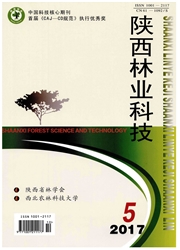

 中文摘要:
中文摘要:
2014年在野生动物主要迁徙季节1—6月,使用型号Ltl-6210被动式红外相机,在东凉公路野生动物通道对陕西观音山国家级自然保护区野生动物进行了监测,并对红外相机"空拍"现象进行了分析,结果表明:主要迁徙季节(1—6月)不同月份之间,相机空拍率也存在差异,5月份最高(60.36%),1月份最低(0.4%),其余月份从大到小顺序为4月〉6月〉3月〉2月;相机白天空拍率(90.69%)显著高于夜间(9.31%),9:00—13:00是相机空拍率较高的时段;光线干扰、水流干扰、植被干扰是引起红外相机空拍的主要因子,其引起的空拍率分别为24.26%、33.58%和42.16%,差异显著(P〈0.05)。为降低红外相机空拍现象,建议正确设置相机的朝向,禁止将相机红外感应器朝向正南,避免面对反光的物体;清除相机红外感应器范围内可能晃动的树枝和杂草,减少在植被郁闭度高的地段设置相机;按照季节变化调整相机灵敏度,春季设置为高或中,夏季设置为低。
 英文摘要:
英文摘要:
Infrared cameras with so many advantages as to be objectivity, hidden, non--invasive, con- tinuous shooting and so on, are widely used in the monitor and research of wild animals. However, in the field monitoring, infrared cameras was often triggered automatically and made a lot of blank pho- tos. From January to June in 2014, along a country road Guanyinshan national nature reserve in Shaanxi, wildlife passage was monitored by the infrared camera (specification Ltl--6210), and auto- matically triggering phenomenon of infrared camera was analyzed and discussed. The result showed that the solar rays, flowing river and the disturbance of the vegetation are the main factors causing blank photos, the blank photos proportion of these causes were 24.26 % , 33.58% and 42.16%, re- spectively, and the different factors affecting blank photos differ very significantly (P〈0.05). Be- sides, the higher rate of blank photos in the whole day was between 9:00--13:00, and the rate at day- time(90.69%)was significantly higher than at night(9.31%). Furthermore, the rate of blank photos varied among different months, with the highest in May (60.36%), the lowest in January (0.4%), the blank photos in other months follow the order: April 〉June 〉March 〉February. To reduce au- tomatically triggering phenomenon, it is suggested that setting the camera in correct orientation, pro- hibiting infrared sensor of cameras towards the south, and avoiding facing the reflective objects are key points. It is also necessary to remove branches and weeds in the front of the camera's infrared sen-sors, and avoid setting camera in high canopy density place. Last but not least, the camera's sensitivi- ty settings should be adjusted according to seasonal changes.
 同期刊论文项目
同期刊论文项目
 同项目期刊论文
同项目期刊论文
 期刊信息
期刊信息
